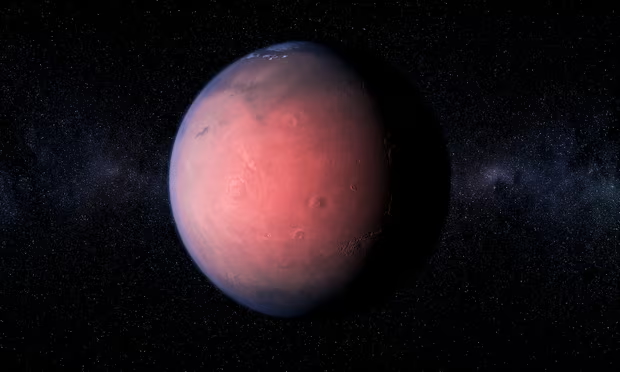The Insights:
Liquid Water Found on Mars, the possibility of liquid water on Mars has long intrigued scientists, as water is a crucial ingredient for life as we know it. Recent studies have revealed groundbreaking evidence that vast amounts of liquid water might be trapped deep within the Martian crust. This discovery not only challenges our understanding of the Red Planet but also raises new questions about its potential to support life. In this article, we explore the latest findings on liquid water found on Mars, the methods used to uncover it, and what it means for the future of Mars exploration.
Discovery of Liquid Water on Mars: A Game Changer
For years, Mars was considered a dry, barren world with only traces of water ice at its poles. However, recent research has turned this assumption on its head. Scientists from the University of California, Berkeley, and UC San Diego have uncovered evidence suggesting that substantial amounts of liquid water may exist deep beneath the Martian surface. This discovery was made possible through the use of seismic data collected by NASA’s InSight lander, which has been monitoring Mars for quakes and other geological activity.
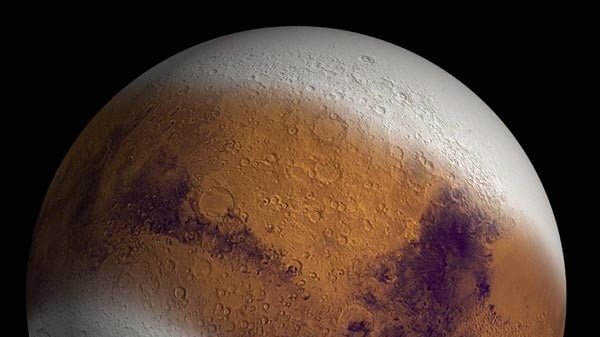
The findings suggest that this liquid water could be trapped within tiny cracks and pores in the Martian crust, located between 11.5 and 20 kilometers (about 7 to 12 miles) below the surface. This discovery is significant because it provides new insights into Mars’ history and its potential to harbor life.
How Scientists Uncovered Mars’ Hidden Water Reserves:
The detection of liquid water on Mars was achieved through a combination of seismic measurements and mathematical modeling. NASA’s InSight lander, which has been stationed on Mars since 2018, has provided crucial data on the planet’s internal structure by measuring seismic waves generated by Marsquakes and meteorite impacts.
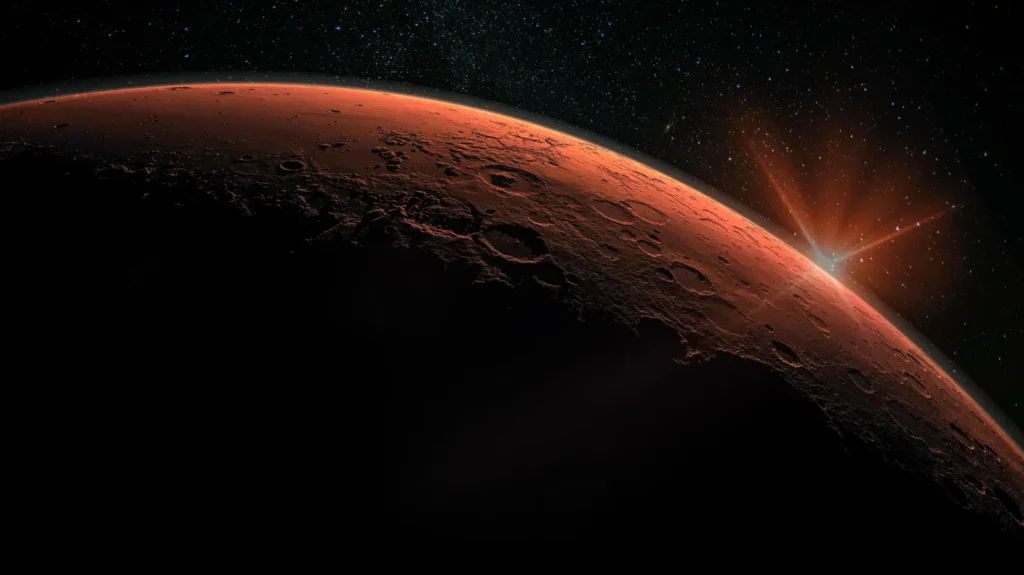
Researchers used this seismic data to analyze how these waves traveled through the Martian crust. By comparing these measurements to known properties of rock and water on Earth, the scientists were able to infer the presence of liquid water deep beneath the Martian surface. The data indicated that the mid-crust of Mars, where the water is believed to be trapped, is cracked and filled with liquid water—a finding that is both surprising and exciting for planetary scientists.
The Depths of Mars: Where Is the Water Located?
The liquid water found on Mars is not easily accessible. It is believed to be located deep within the planet’s crust, at depths ranging from 11.5 to 20 kilometers. This is far below the reach of current technology, making it challenging to explore or extract.
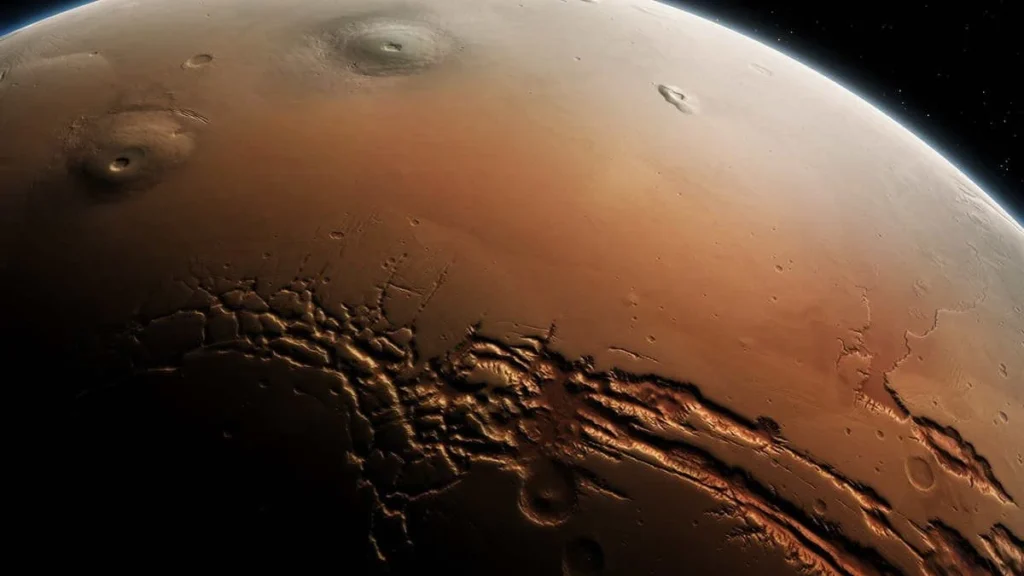
The discovery suggests that the water could have been sequestered in the crust as Mars’ surface water gradually disappeared. Scientists believe that this water may have infiltrated the crust during a time when the upper layers of Mars were warmer, allowing it to remain in liquid form even as surface conditions became inhospitable.
The Implications for Martian Life: Could Mars Support Life?
The presence of liquid water on Mars is a tantalizing clue in the search for extraterrestrial life. On Earth, where there is liquid water, there is life—even in the most extreme environments, such as deep underground or at the bottom of the ocean. This raises the possibility that similar conditions on Mars could support microbial life.
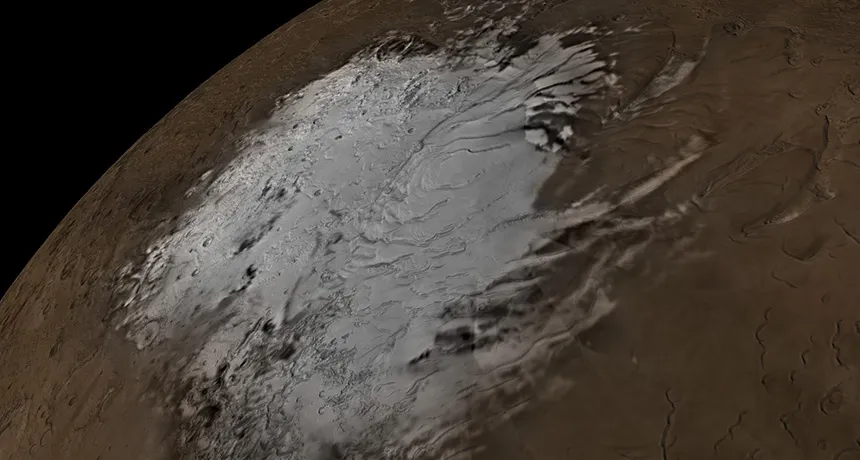
Dr. Vashan Wright, one of the study’s co-authors, emphasized that while the presence of water alone does not guarantee life, it is a key ingredient for habitability. The discovery of liquid water in the Martian mid-crust opens up new avenues for the search for life on Mars, particularly in these deep subsurface environments where conditions may have remained stable over long periods.
Challenges in Accessing Mars’ Water Resources:
Despite the excitement surrounding the discovery of liquid water on Mars, there are significant challenges in accessing it. The depth at which the water is located—11.5 to 20 kilometers beneath the surface—makes it difficult to reach with current technology. This means that while the discovery is scientifically valuable, it may not be immediately useful for human exploration or colonization efforts.
Moreover, the water trapped in the Martian crust is likely in small amounts dispersed within rock fractures, making it challenging to extract even if we could reach it. As Dr. Steven Banham of Imperial College London pointed out, this water might not be a viable resource for crewed missions to Mars, at least not in the near future.
The Future of Mars Exploration:
The discovery of liquid water deep beneath the surface of Mars is a major milestone in our understanding of the Red Planet. It challenges previous assumptions about Mars’ dry, desolate nature and opens up new possibilities for the planet’s habitability. While accessing this water presents significant challenges, the discovery is a crucial step forward in our quest to understand Mars’ history and its potential to support life.

As we continue to explore Mars, the presence of liquid water will remain a focal point of scientific research, guiding future missions and shaping our understanding of the planet. The search for life on Mars is far from over, and with each new discovery, we move closer to answering one of humanity’s most profound questions: Are we alone in the universe?
To see the latest News Updates Click Here
